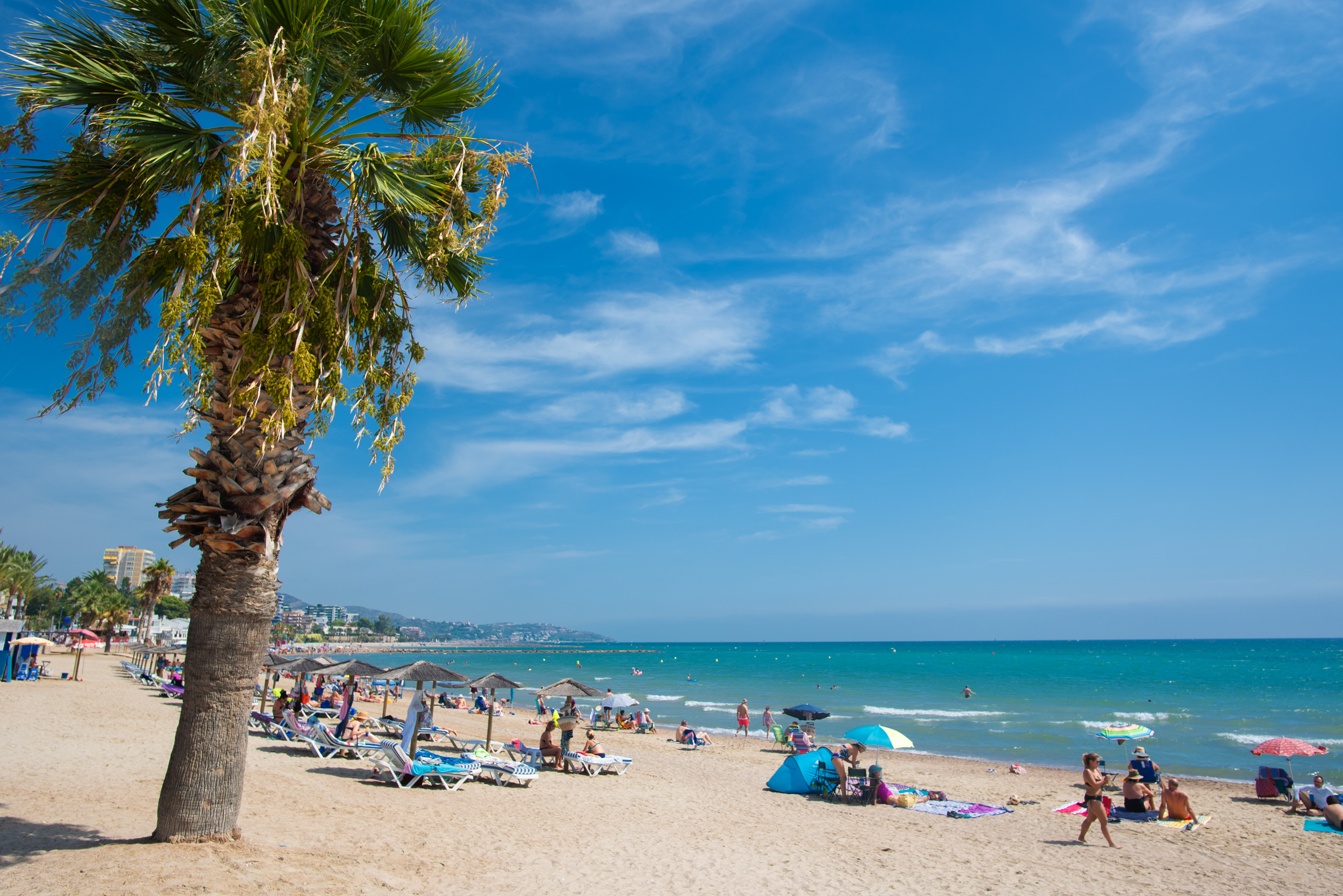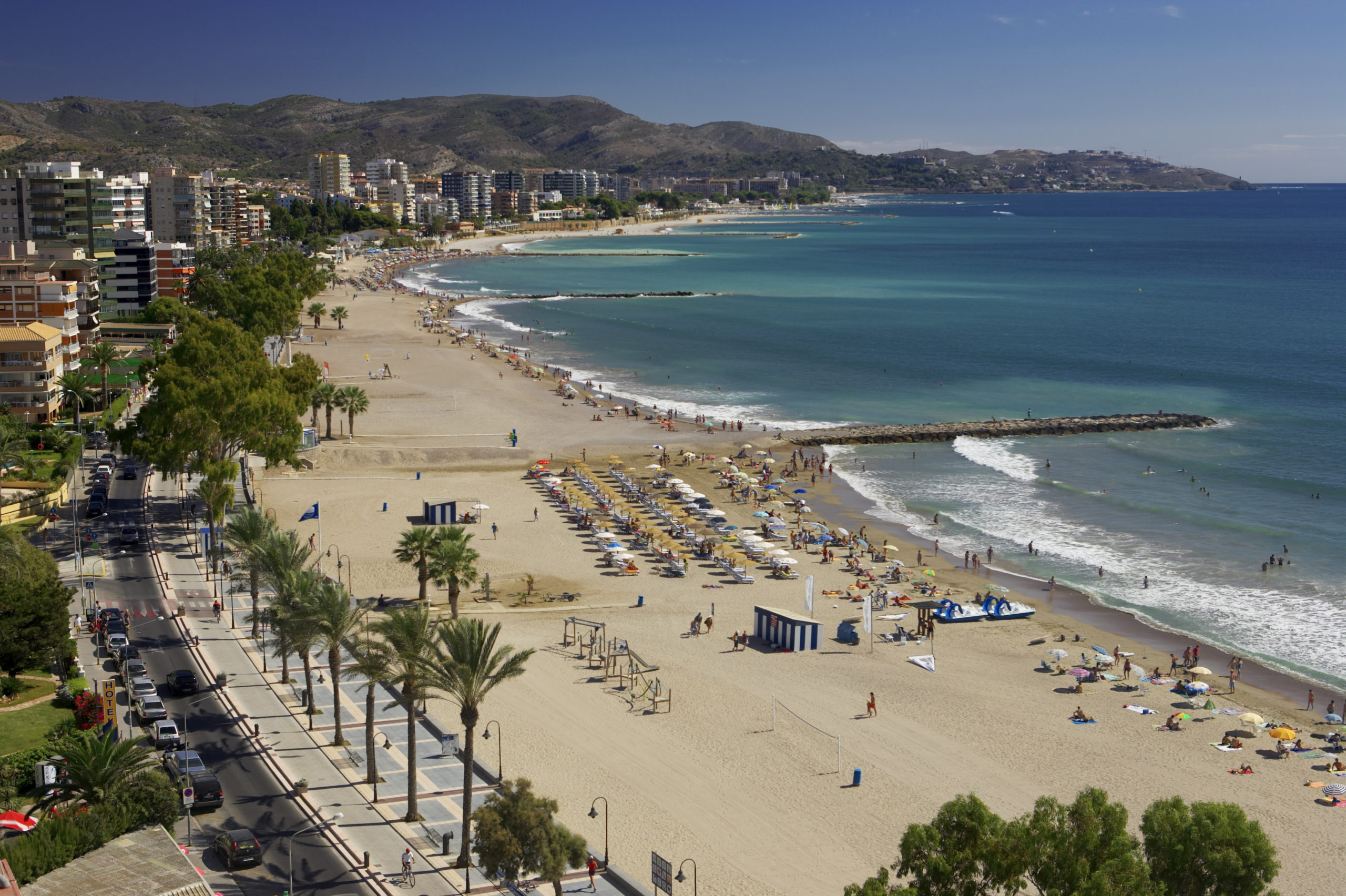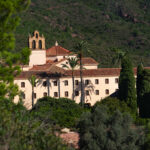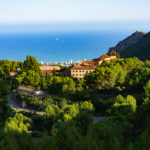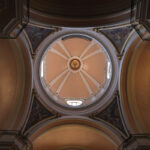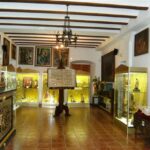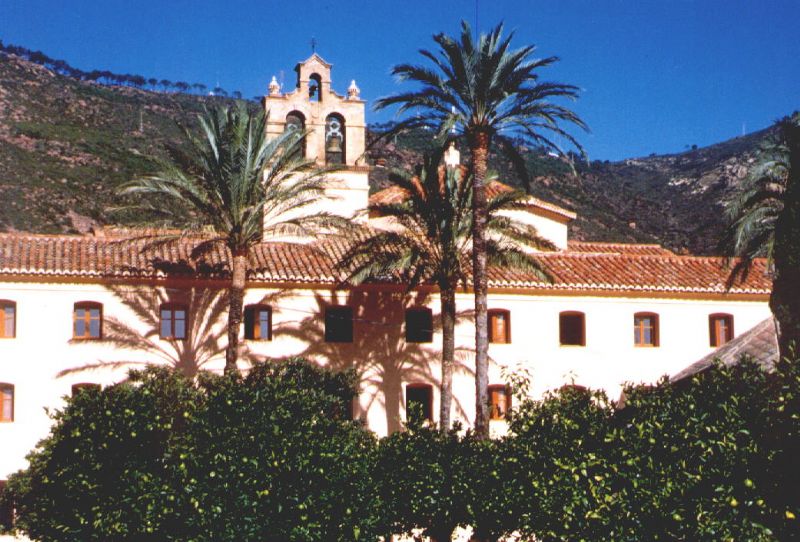
HERITAGE
MUSEUM OPENING HOURS:
Sunday mornings.
Groups: Please call 964 30 09 50 to arrange a visit.
CENTRE OF SPIRITUALITY OF SAINT TERESA
It has conference rooms, chapels, dining rooms and 42 double rooms. For meetings and convivial gatherings.
PRAYER CENTRE
The centre welcomes everyone who wants a strong experience of silent prayer. It has beautiful views of Benicàssim and the sea.
Origins of the Carmelite Order
Around 850 B.C. there lived in Israel a prophet named Elijah the Teshbite. He convinced Israel that there is only one true God. Some of his greatest deeds took place on Mount Carmel, which remains for posterity linked to his memory.
Recent archaeological excavations in the Wadi es-Siah have confirmed the existence of hermits on Carmel as early as the 4th century A.C. They were Greek-speaking and of Byzantine rite. In the 12th century, some knights from Europe, who had taken part in the Crusades, settled in Carmel, where they consecrated themselves to live in obeisance to Jesus Christ, in imitation of the Virgin Mary.
It is not known how the fusion between Greeks and Latins came about, but in 1209 the Latin patriarch of Jerusalem, Saint Albert, wrote a rule of life for the Carmelite hermits, who began to call themselves "Brothers of the Blessed Virgin Mary of Mount Carmel".
Faced with Muslim pressure, from 1238 they returned to Europe and settled in Malta, England, France, Spain... where they became a Mendicant Order, in the style of the Franciscans and Dominicans, who emerged in those years. The convents multiplied and began to write the pages of a long and glorious history that continues to this day.
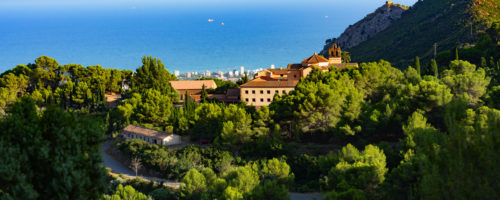
The ancient monastery
The original Monastery of the Desierto is located on a plain between ravines, some 500 metres from the present-day monastery. It was built between 1697 and 1733. The enclosure had the capacity to house twenty-four religious in its different rooms. These included a peculiar cloister, cisterns, a hostelry and an episcopal palace, the remains of which can still be seen today.
In 1783 a series of torrential rains and earth movements seriously damaged the structure of the building, after which the Discalced Carmelites were forced to abandon it in search of a safer location.
Today, contemplating its ruins, the visitor can enjoy one of the most charming and poetic places in the DESIERTO DE LAS PALMAS. With the Mediterranean as a backdrop, these traces of the past reveal a picture of serene beauty that invites us to recall the simplicity and sanctity lived there on a daily basis for a century.
Current monastery
After the abandonment of the old buildings, construction began on the new monastery where it stands today. Its construction took place between 1784 and 1791.
The Monastery, with its sober and elegant presence, follows in its structure the indications set by the Carmelite Rule and by St. Teresa of Jesus; it distributes the different conventual dependencies around the church, which occupies its centre, both physically and vitally. Around the church are the rooms and common areas, both for the Religious Community and the Spirituality Centre.
Surrounded by orange groves and gardens, backed by Monte Bartolo, integrated in an extraordinary natural environment and dominating the valley that descends to Benicàssim, El Desierto becomes a privileged viewpoint for anyone who wishes to find an atmosphere of peace and beauty.
The Church
The Conventual Temple is located in the very centre of the Convent, surrounded by the different rooms in which the life of the religious takes place. This layout follows the intuition of the foundress of the Discalced Carmel, Saint Teresa of Jesus, who explains the structure of our soul "as a castle made of diamonds, in which there are many dwellings around the main one, which is at the centre of them all and is where the most secret things happen between God and the soul, because it is the dwelling of God". A marked simplicity of classicist style and tremendous functionality characterise the tone of this building.
The Latin cross plan is deeply symbolic, because at the head of the church is the tabernacle with the reservation of the Blessed Sacrament, indicating that Christ is our head. The faithful are all placed inside the cross, to signify that each of us is a member of the Body of Christ.
It is covered by barrel vaults that converge at the transept, where a half-sphere dome rises on pendentives. The dome symbolises heaven, which descends to earth in the House of God. The decoration, in stucco, is designed in the classical style, with an arrangement of pilasters under an entablature that runs the length of the building. The angels that decorate the cornices and the saints on the bells remind us that the Church of Heaven (angels and saints) is united with that of the earth during the celebration of worship.
The chancel is presided over by a neoclassical altarpiece representing the Transverberation, a mystical experience of Saint Teresa in which she felt an angel piercing her heart with a dart, and to which the Monastery is dedicated. The decorative programme is completed by the emblematic figures of the Virgin of Mount Carmel, Saint Joseph, Saint Elias and Saint John of the Cross, in the niches of the transept, and the paintings on the pendentives, on the life of Saint Teresa.
At the foot of the church is a chapel-pantheon, which houses the remains of thirty-five friars of the province of Discalced Carmelites of Aragon Valencia, victims of religious persecution in 1936. Many of them were inhabitants of the DESIERTO DE LAS PALMAS at some point in their lives. Their cause for canonisation is at a very advanced stage and they will soon enjoy the honour of the altars.
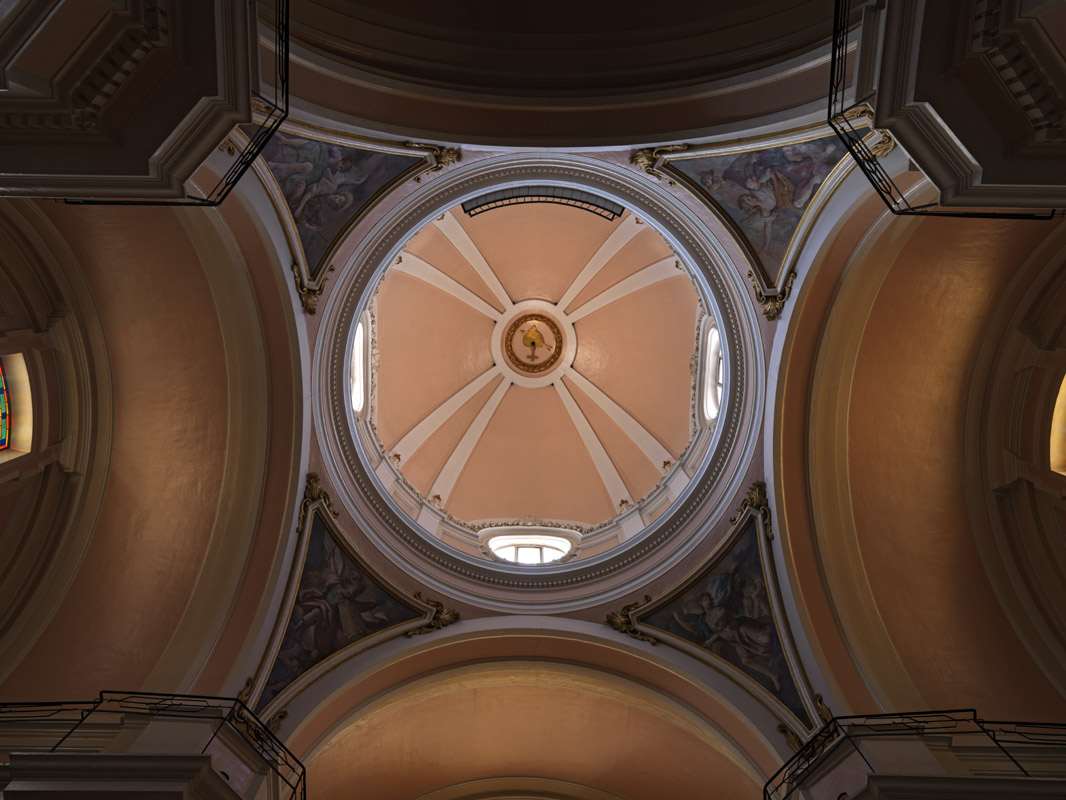
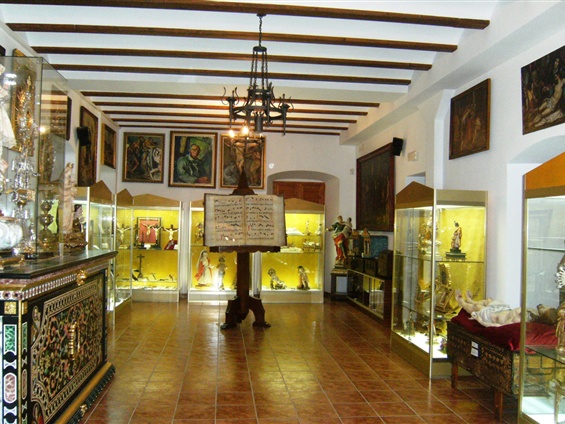
Museum
One of the characteristics that distinguish the Desierto de las Palmas is the enormous effort and will to conserve and make known its great patrimonial and cultural wealth. This is evident in a number of initiatives, among which the creation of its Museum stands out.
In 1971, two rooms were inaugurated as a deposit in which the most significant works of the convent were exhibited. The reception was so favourable that it prompted the religious to carry out a larger project, for which pieces of special artistic value were collected from different convents of the Order. The province of the Discalced Carmelites of Aragon and Valencia, together with these convents, continues to own the works. In recent years, the process of incorporating works has increased, as well as the restoration of those that require it.
Today it has a truly unique collection in terms of both quantity and quality. The works it houses cover a wide range of origins, both in terms of space and time. Here we can admire all kinds of pieces: ceramics, painting, sculpture, gold and silver work, embroidery, engravings... from different parts of Spain, France, Italy, Germany, the Netherlands, Russia, Greece, Israel, Lebanon, Mexico, the Philippines, etc.
A unique testimony to the art that visitors can enjoy is the 18th century ceramic altarpiece with the Prayer of the Carmelite, possibly one of the largest pieces to come out of the Royal Factory of the Count of Aranda in L'Alcora. Other works bear witness to important events linked to the Order.
The collection also includes an important collection of Russian icons, which provide an insight into an artistic and spiritual code that is unusual in the West.
The languages of medieval art and spirituality are reflected in some very beautiful examples.
The whole ensemble is displayed alongside works by the most outstanding masters of painting and sculpture. Juan de Juanes, Ribera, Salzillo, Gregorio Fernández, José and Ignacio Vergara, Viladomat, Vicente López, Maella and Mengs are just a few examples of the interesting and surprising journey through the art that the museum treasures.
